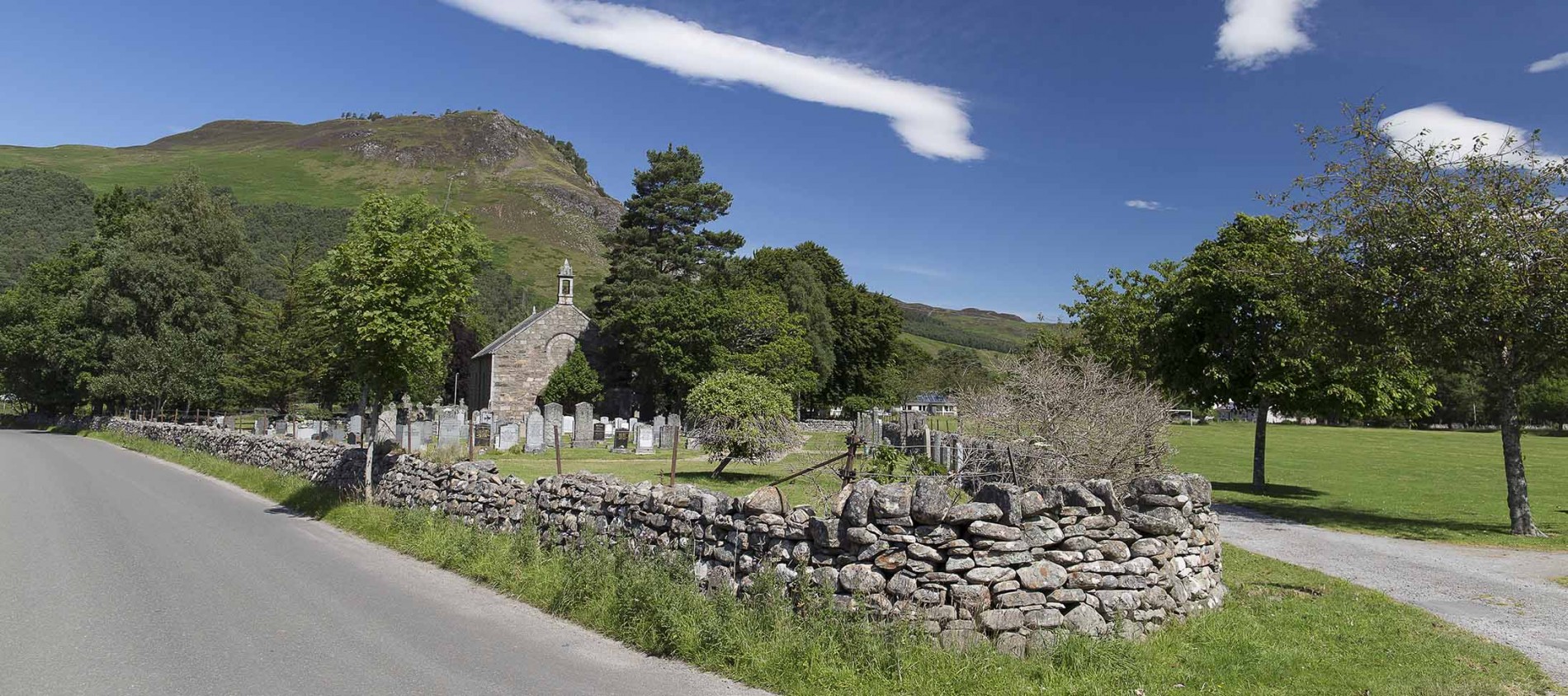

For churches in Rannoch click here
------------------------------------------------------------------------------------------
Information below taken from Electric Scotland
It was in the 5th and 6th centuries AD that the Christian missionaries from Iona moved into the wild country beyond the Dumalban Ridge. To the pagan Celts of Rannoch, the story of Jesus, the brave young god who came from an equivalent of Tir nan Og presented similar attractions to their own beliefs in eternal life, but what impressed them most was the bravery and sincerity of the priests. Brave they had to be to cross difficult mountains, to face not only the imaginary dangers of wizards and demons but the real dangers of flooded rivers and barbarous men; and sincere they had to be to devote their lives to others. These holy men lived as hermits in their chosen districts or they set up cells which they continued to visit year after year.
St. Blane was the first missionary to visit Rannoch. He established his cell in the old Druid’s Grove of Lassintullich where the early inhabitants worshipped by the ancient standing stone. Here also was the sacred healing well which became known as St. Peter’s Well which had been commonly used in pagan times. His church was built on the place which has become known as Tom an t Seipel or Chapel Hill, and it was consecrated with sacred dust from Iona. The present ruin occupies the site of the ancient chapel and the present building recalls the primitive architecture of the Celts with its small round headed window. The standing stone has been inscribed with a cross by the Christians in later years. St. Blane died in AD 590.
St. Chad who gave his name to Innerhadden was said to have found the people in this area in a sad state but he laboured in the fields with them and encouraged them so that it was said that he brought a new hope to one and all. The grave yard said to be the site of his cell is set in a most peaceful and beautiful grove overlooked by Schichallion. He had many other cells to visit but he came to Rannoch once a year.
St. Moluag had a reputation for extensive journeys and it is not surprising that he had frequent visits to this region. Both Dunalastair and Carie claim to have connections with him.
St. Conan consecrated the old church of St. Conan’s with the sacred dust from Iona. Killichonan burial ground is said to be the old churchyard. A St. Congan is also mentioned as having been buried here so there may be a confusion of names.
Other burial ground in Rannoch have the names of Saints attached to them; St. Lukes at Dunalastair with its ancient spring called Argentine; St. Michaels of Camghouran and St. Maronaig of Carie being examples. Although some say that there would appear to be more saints than sinners in Rannoch at that time, there is no doubt that these men brought great benefit to the area.
In later days the graveyards became particular clan burial grounds. Killichonan contains the MacGregors, St. Michael’s, the Camersons, St. Lukes the Robertsons and Innerhadden and Lassintullich the Stewarts.
In the 1500s the Reformation split the Church, and was the cause of division between state and monarch, and set the seed for the Jacobite clan risings. These would lead to the end of the clan system with the defeat of the Jacobites at Culloden in 1746. The result was that the newer missionaries came to Rannoch as much to give secular teaching as to preach the Christian faith, finally bringing peaceful settlement to the area.
The parish church for Rannoch at that time was in Fortingall, and the Reverend Duncan McAra would occasionally visit Rannoch to preach. But in the main people were expected to travel there. The Society in Scotland for the Propagation of Christian Knowledge (SSPCK) was also sending missionaries. One of these was Dugald Buchanan, to whom the obelisk in Kinloch Rannoch village square is dedicated, with an information board nearby.